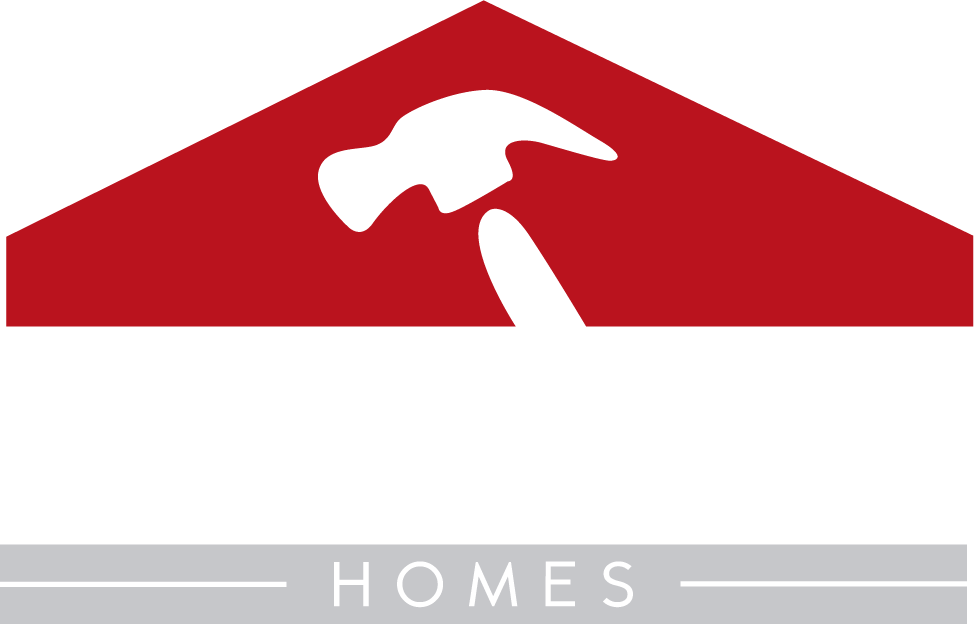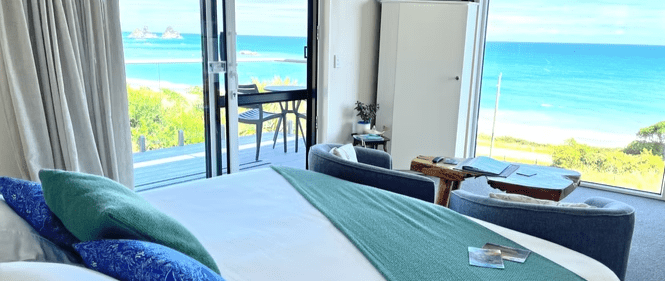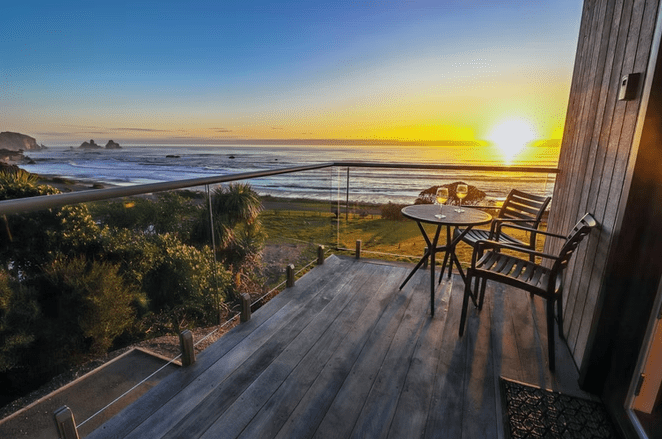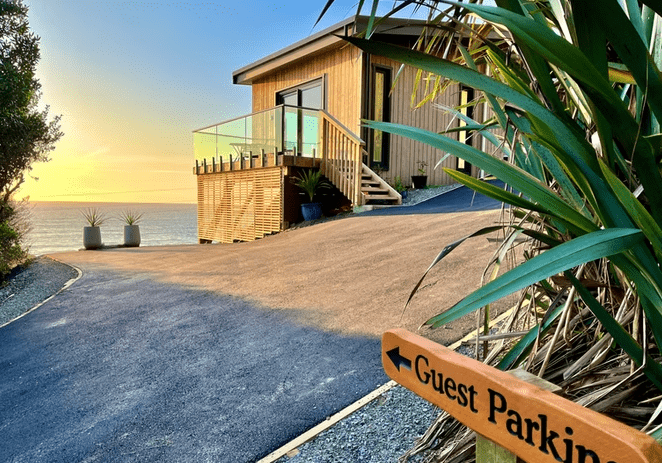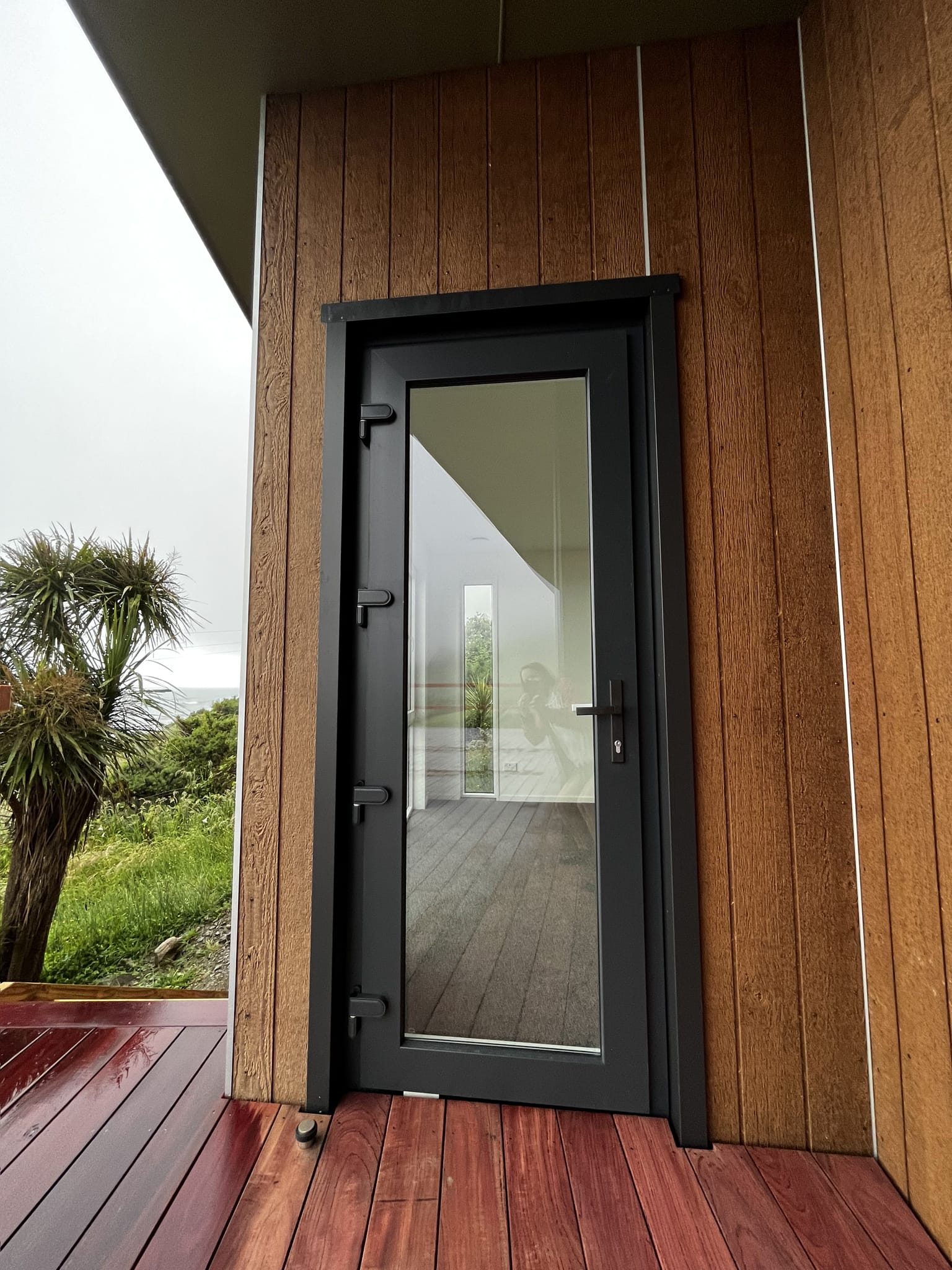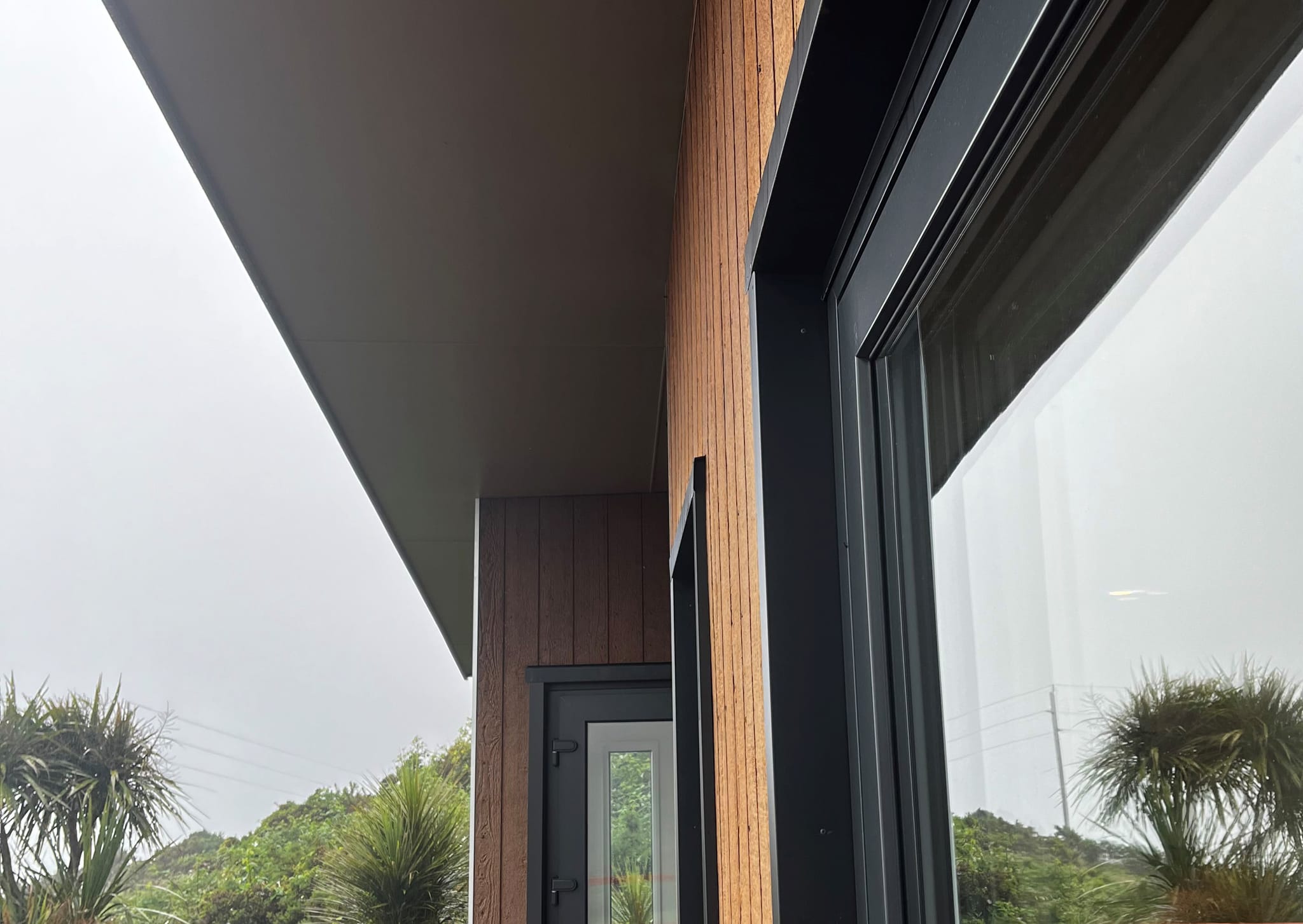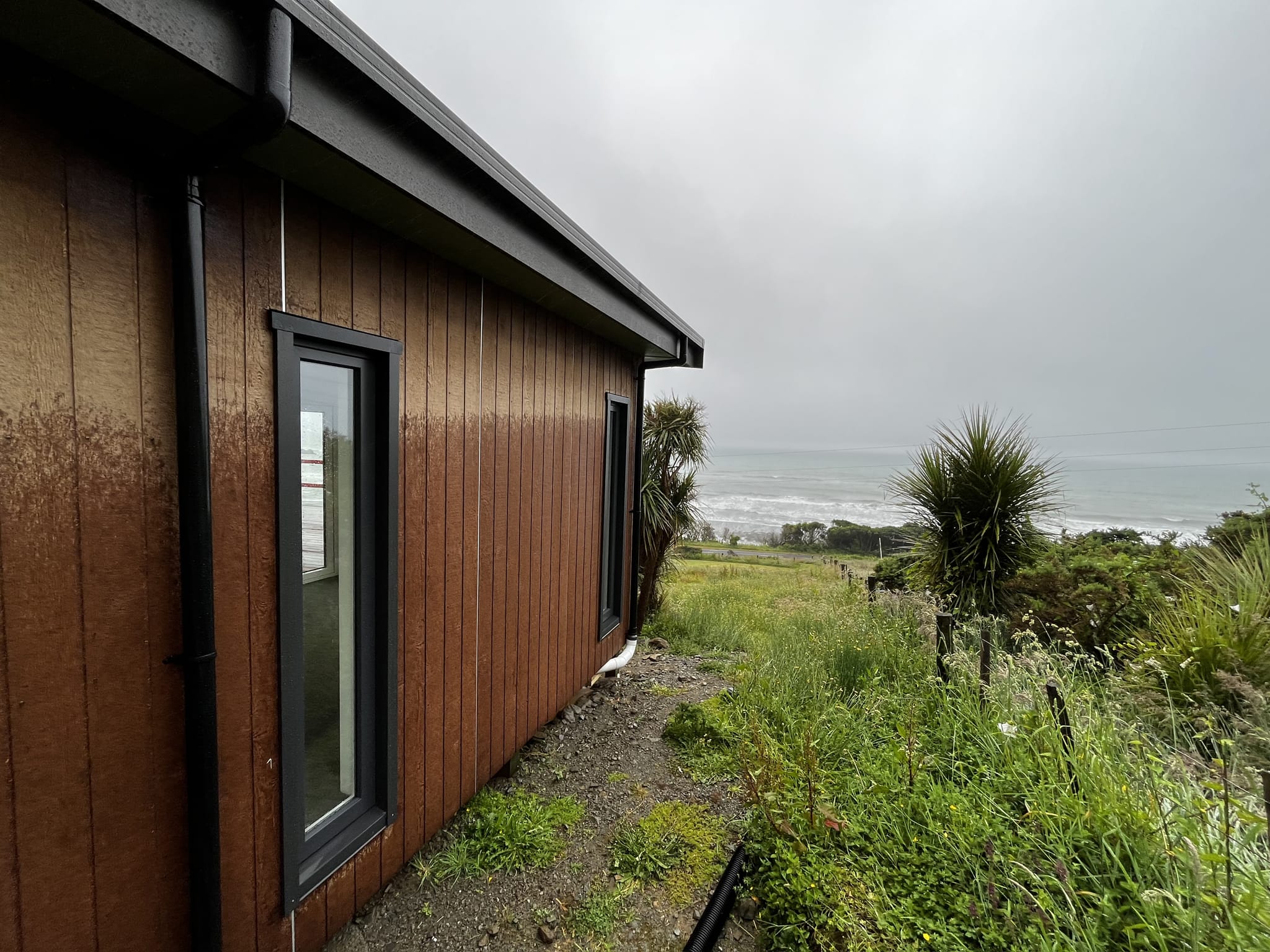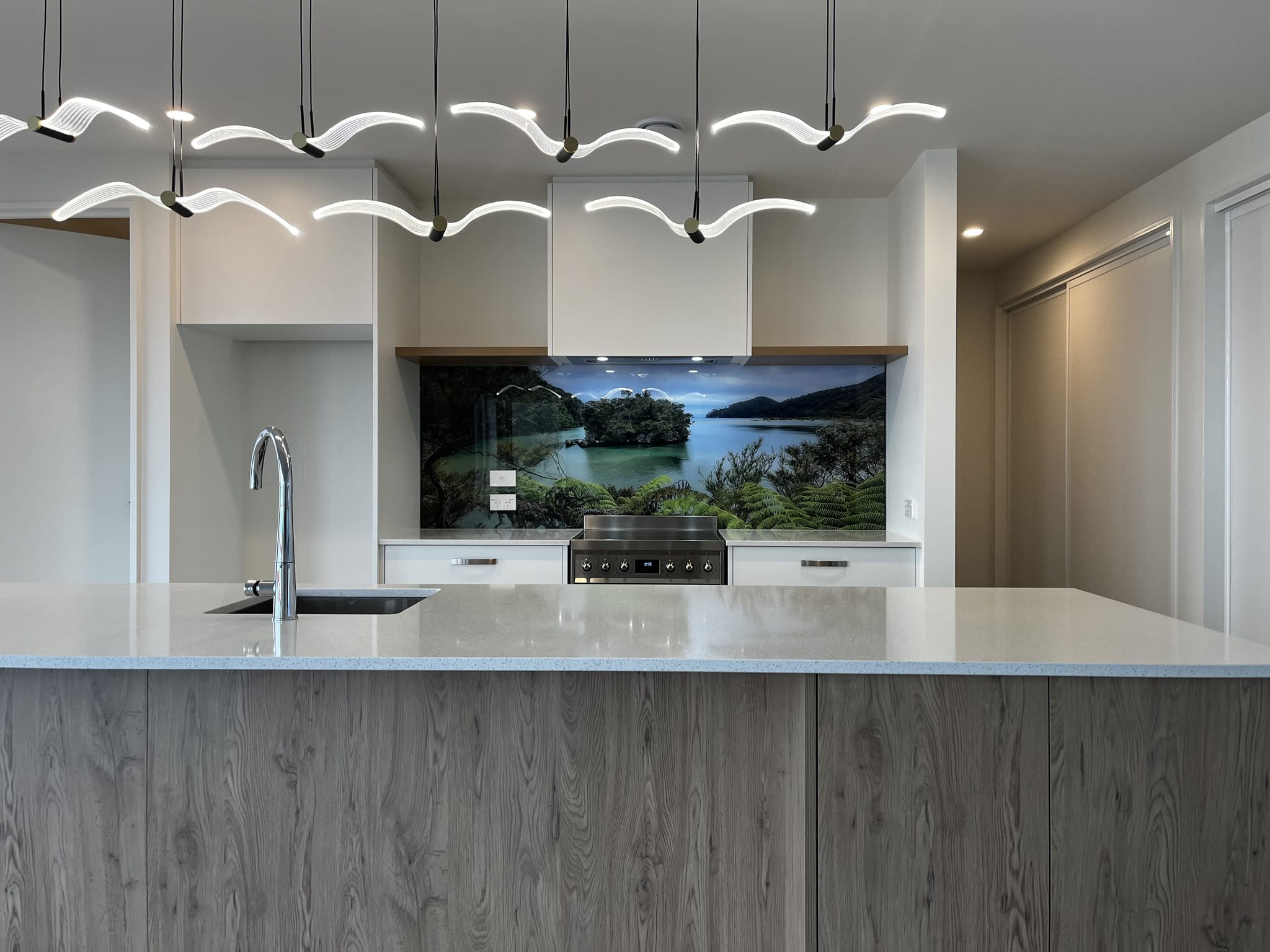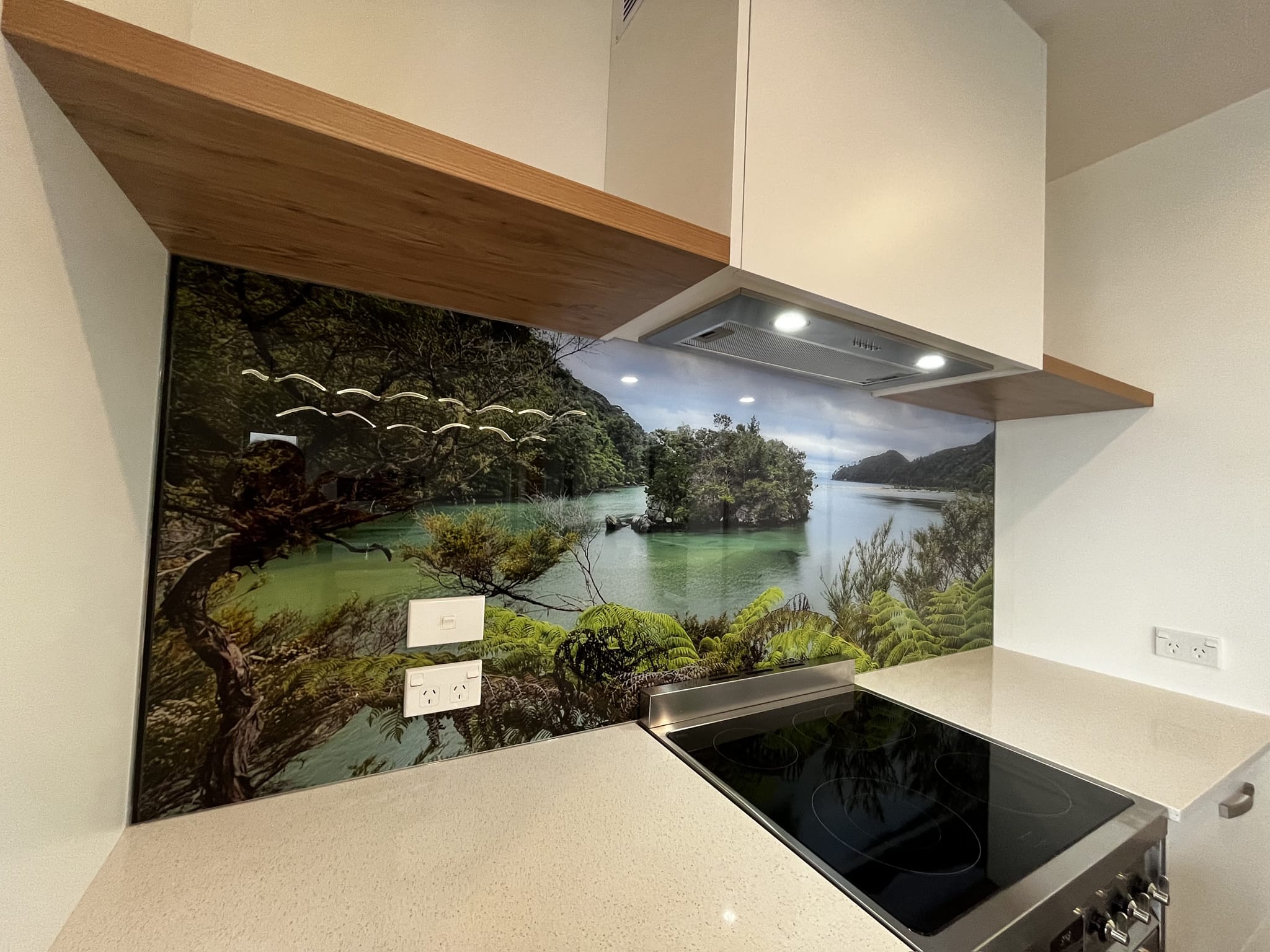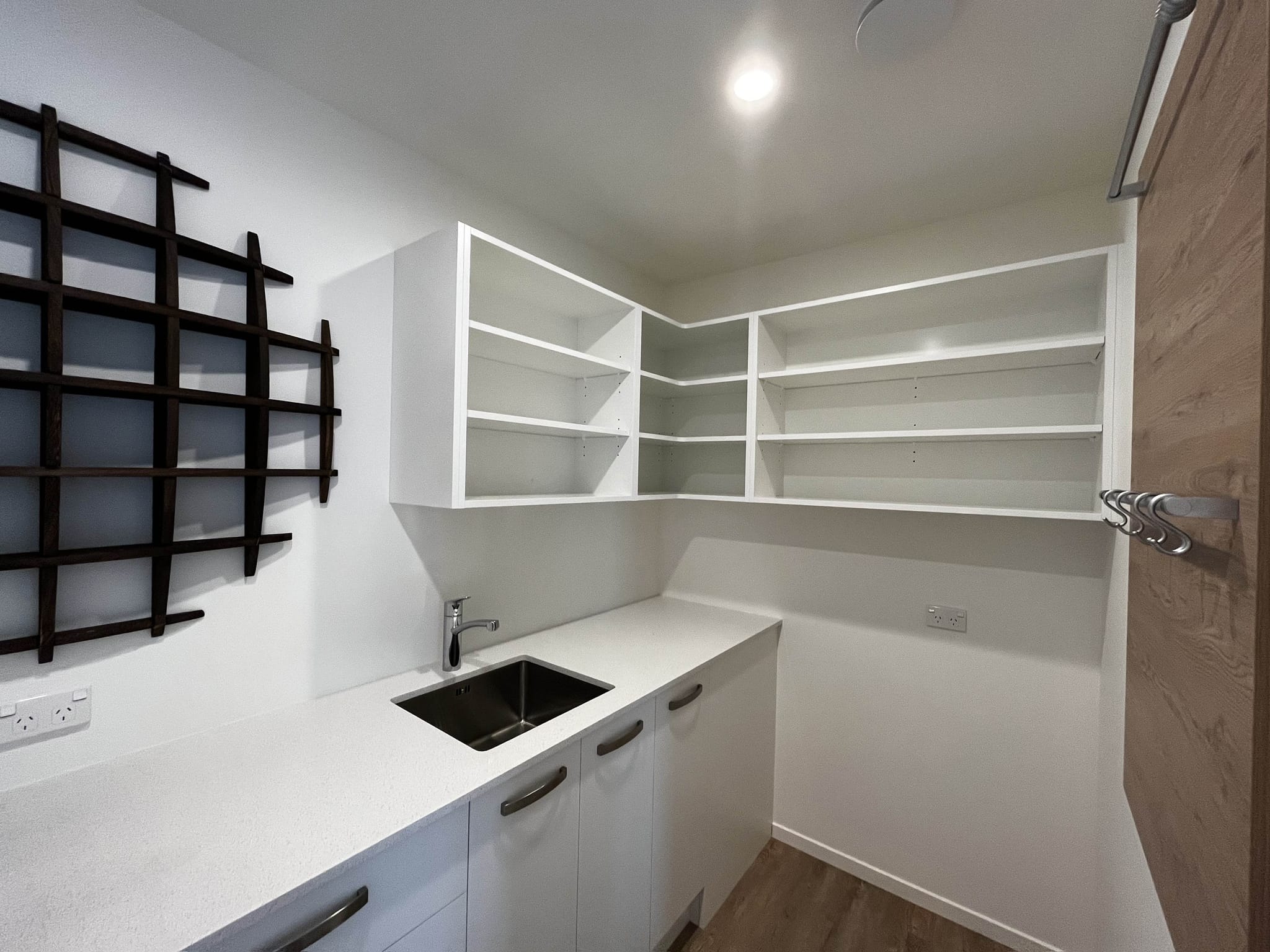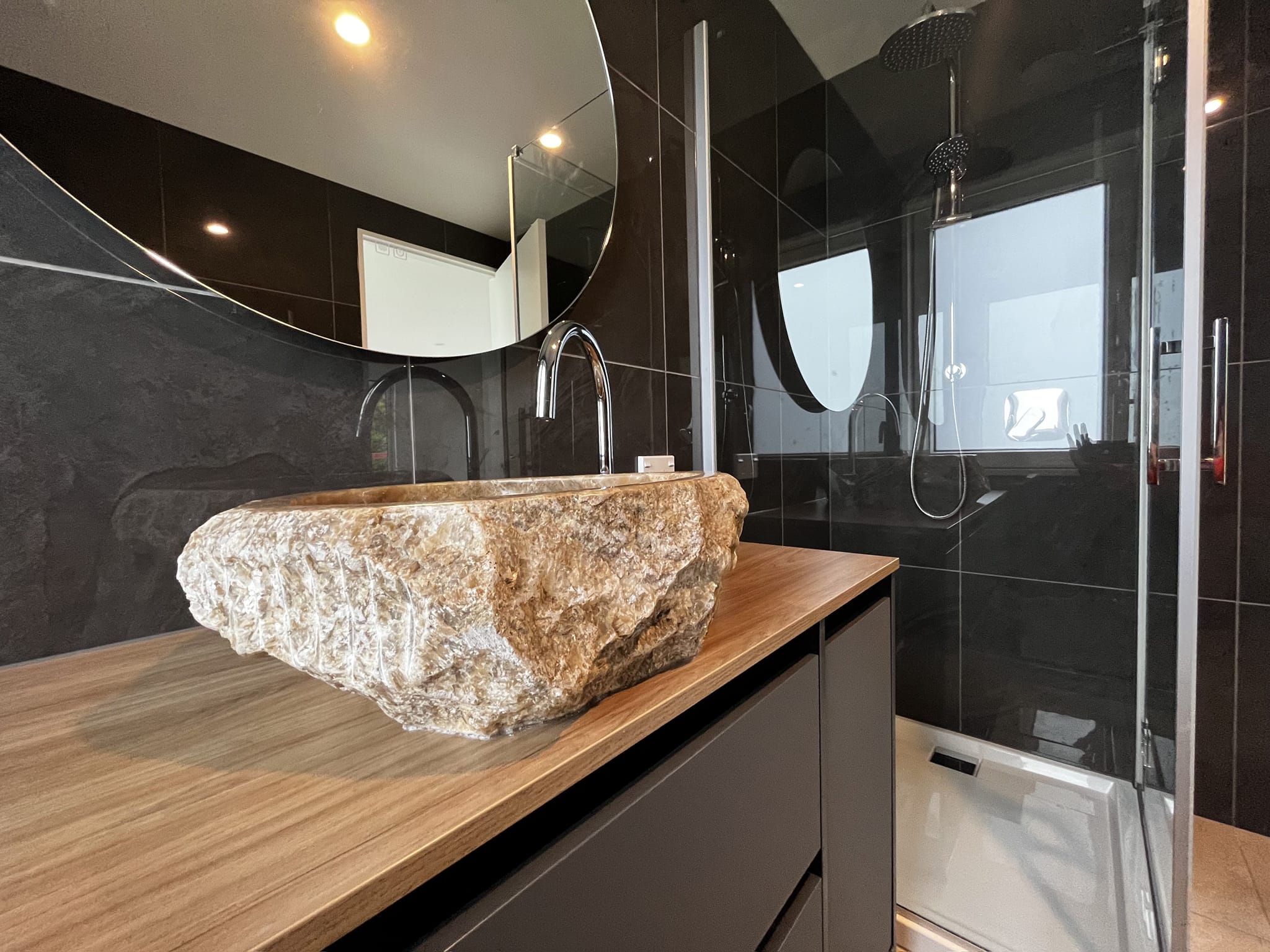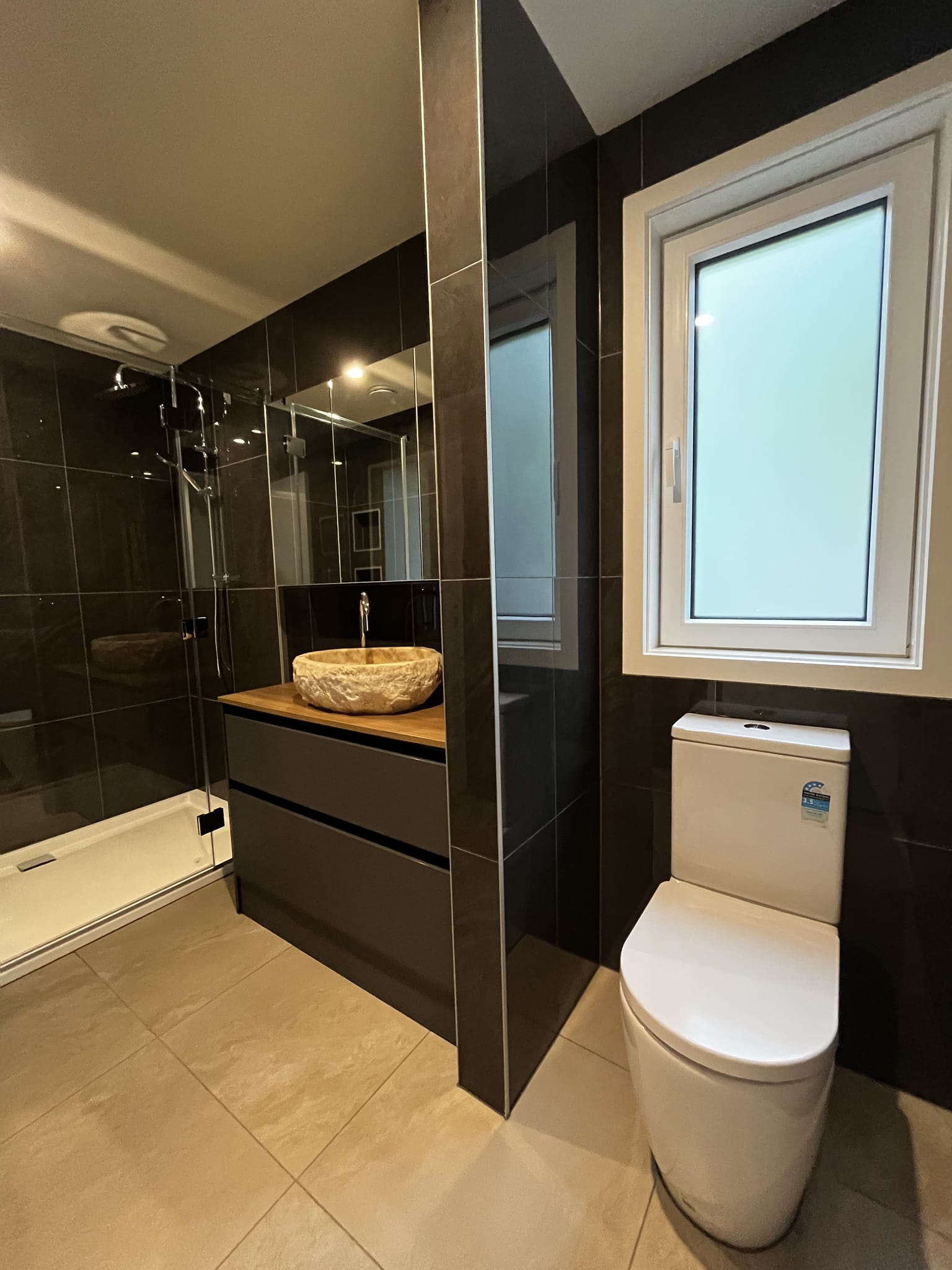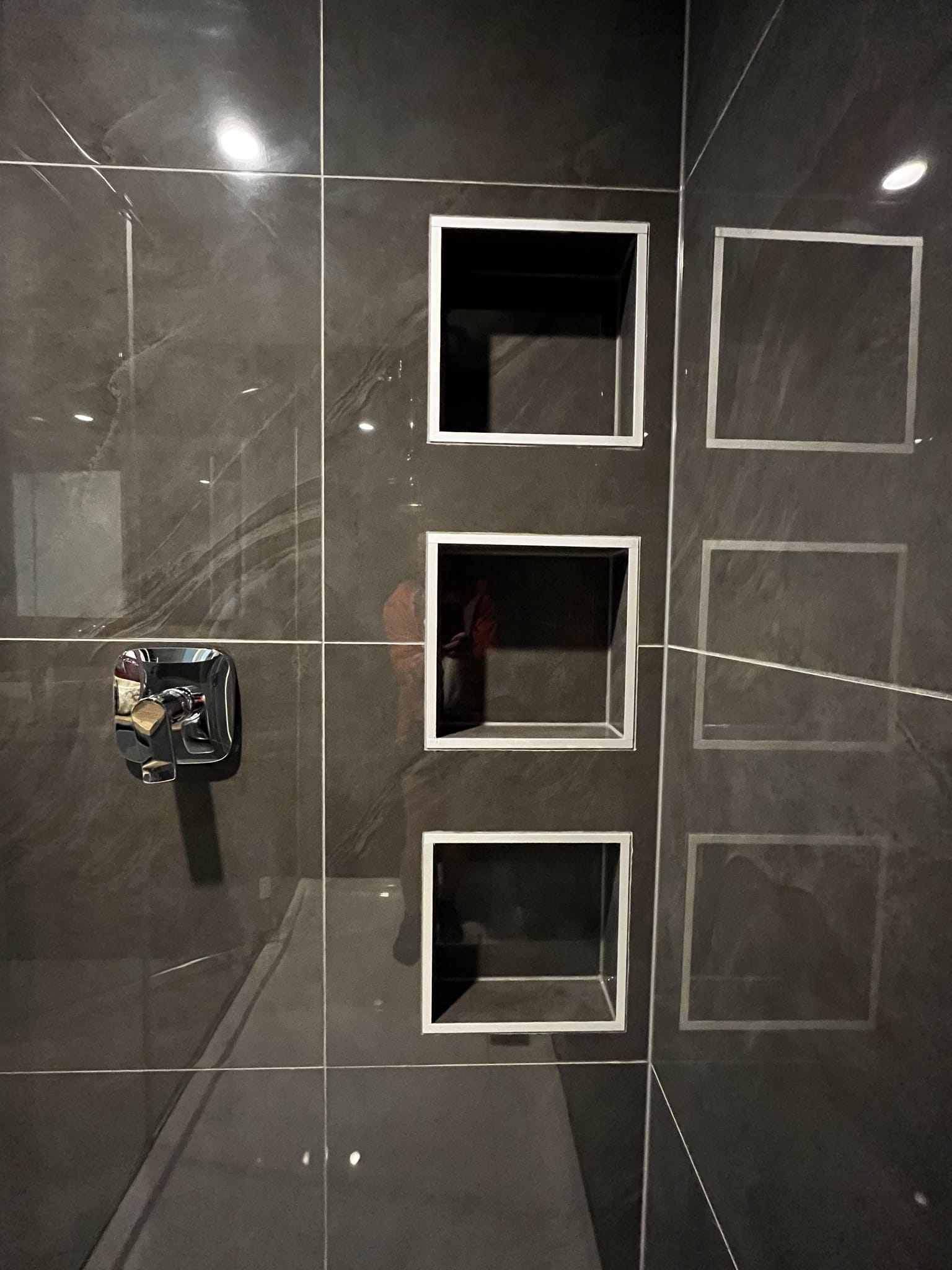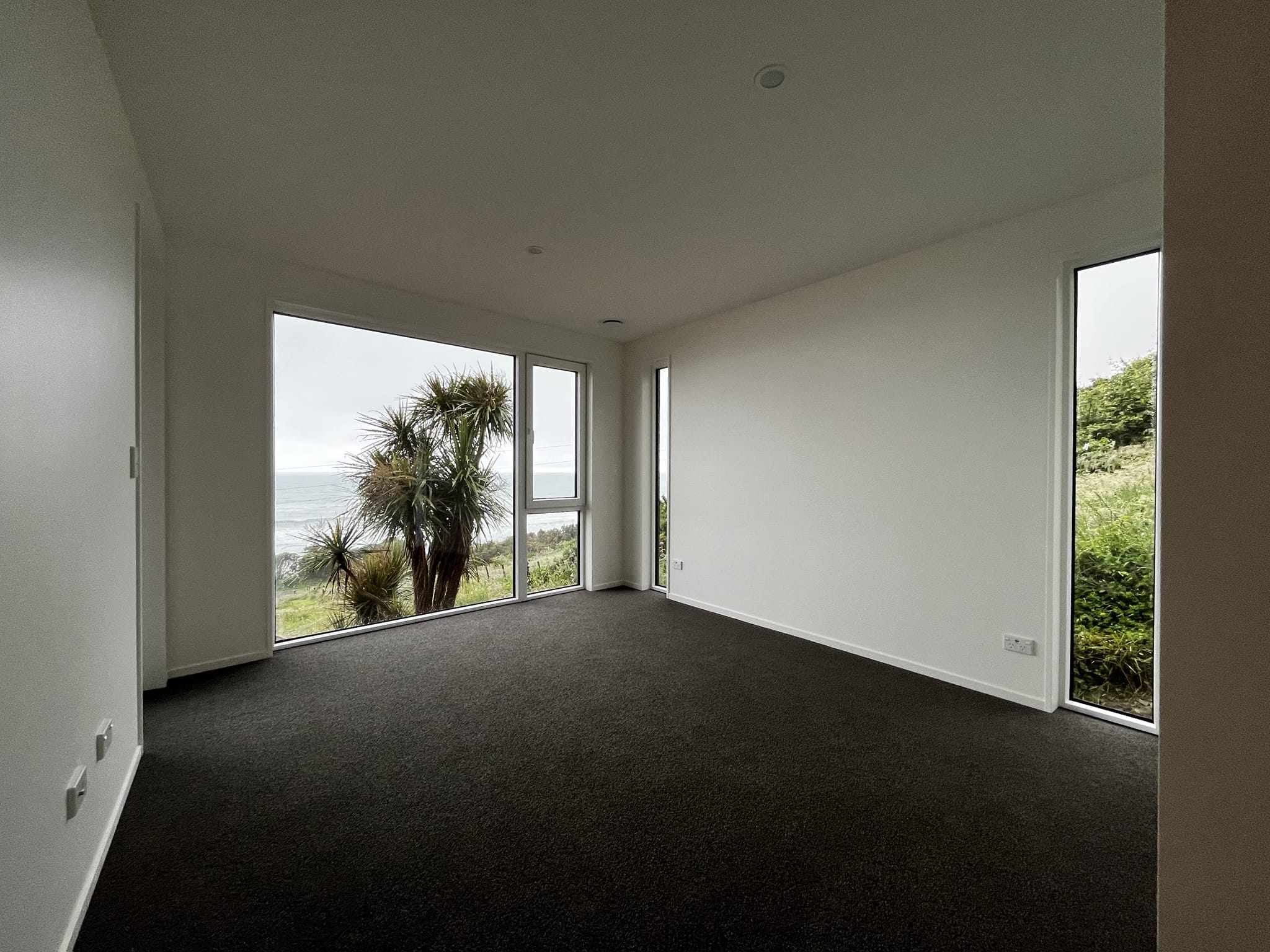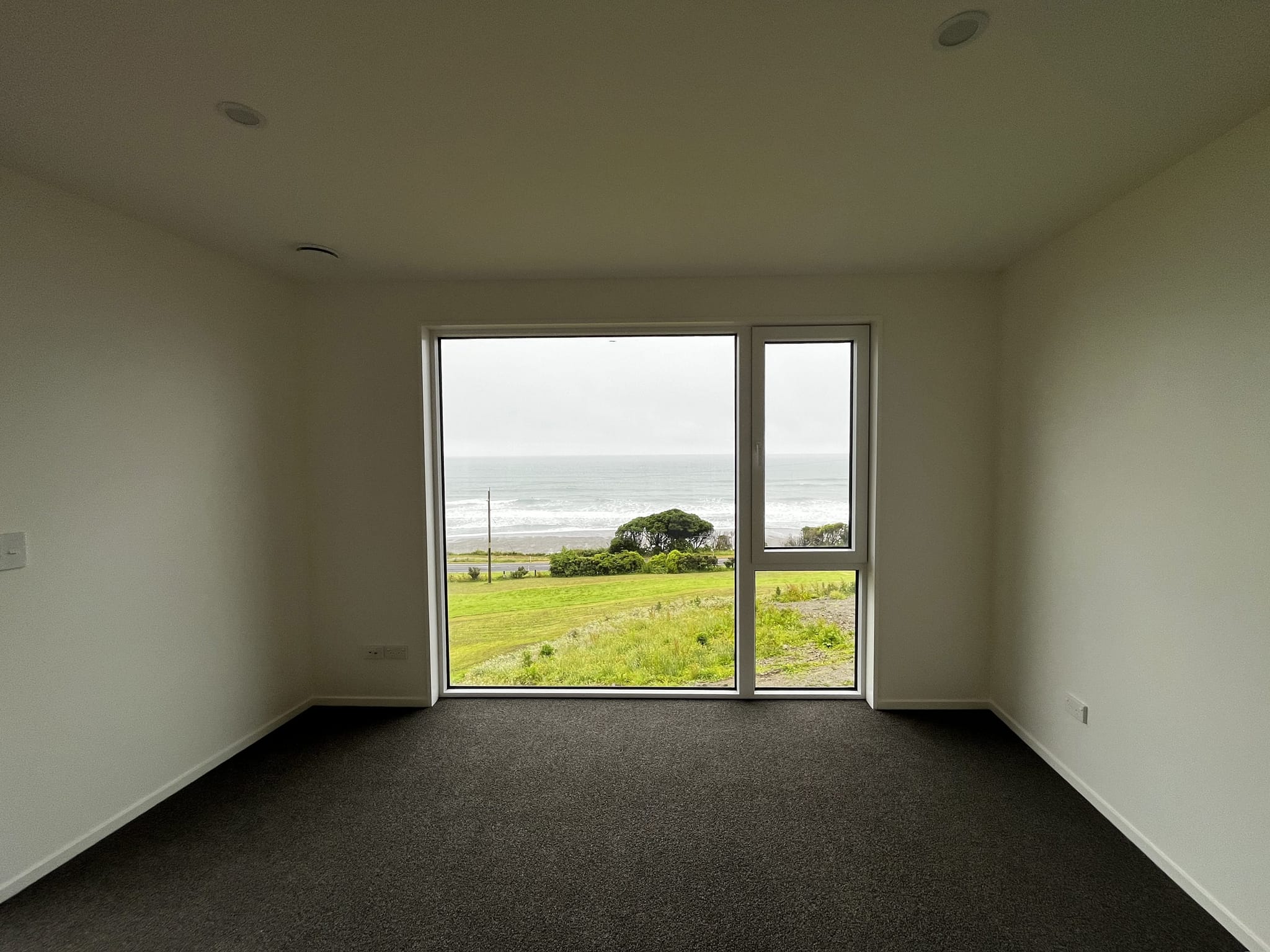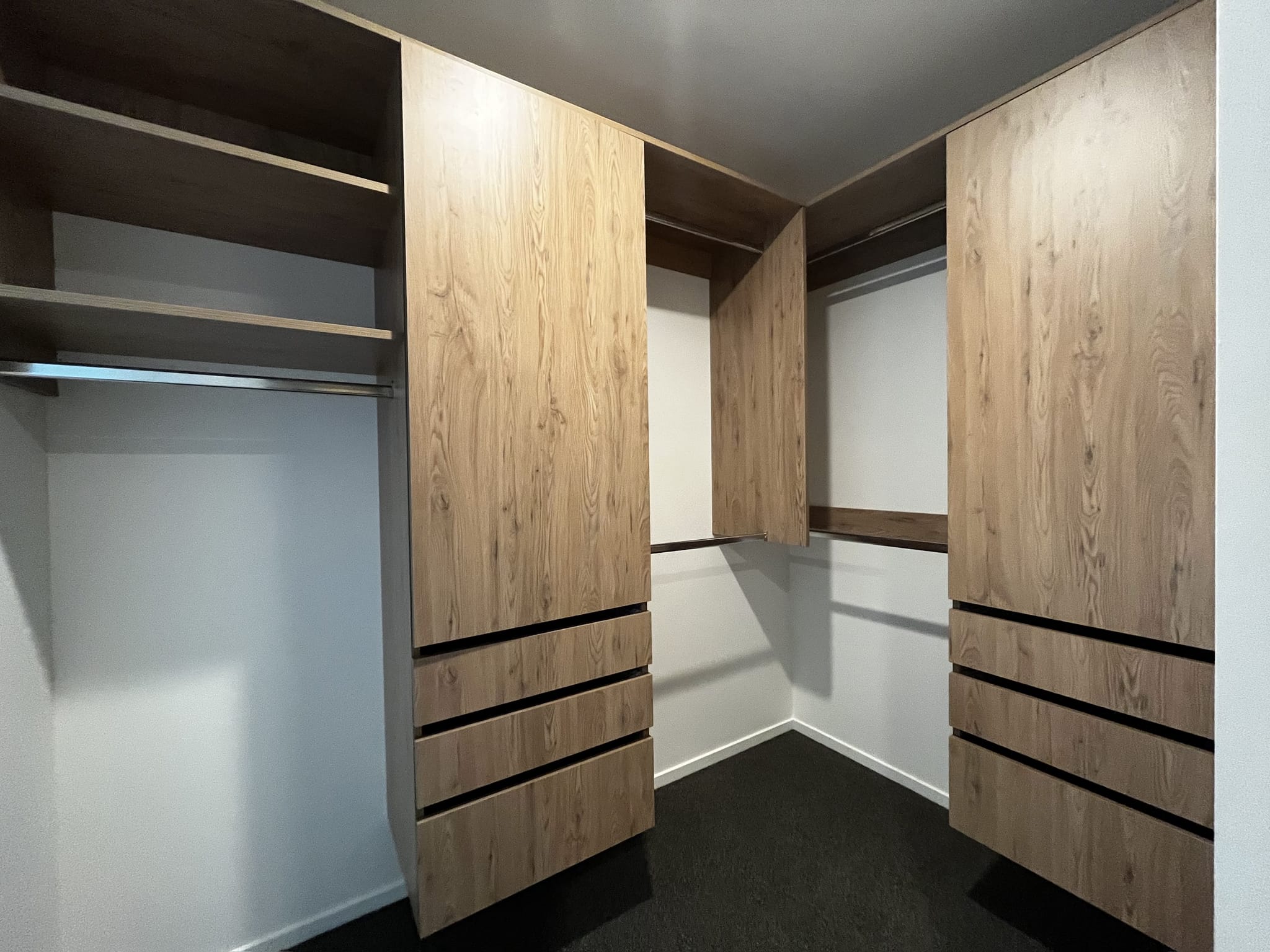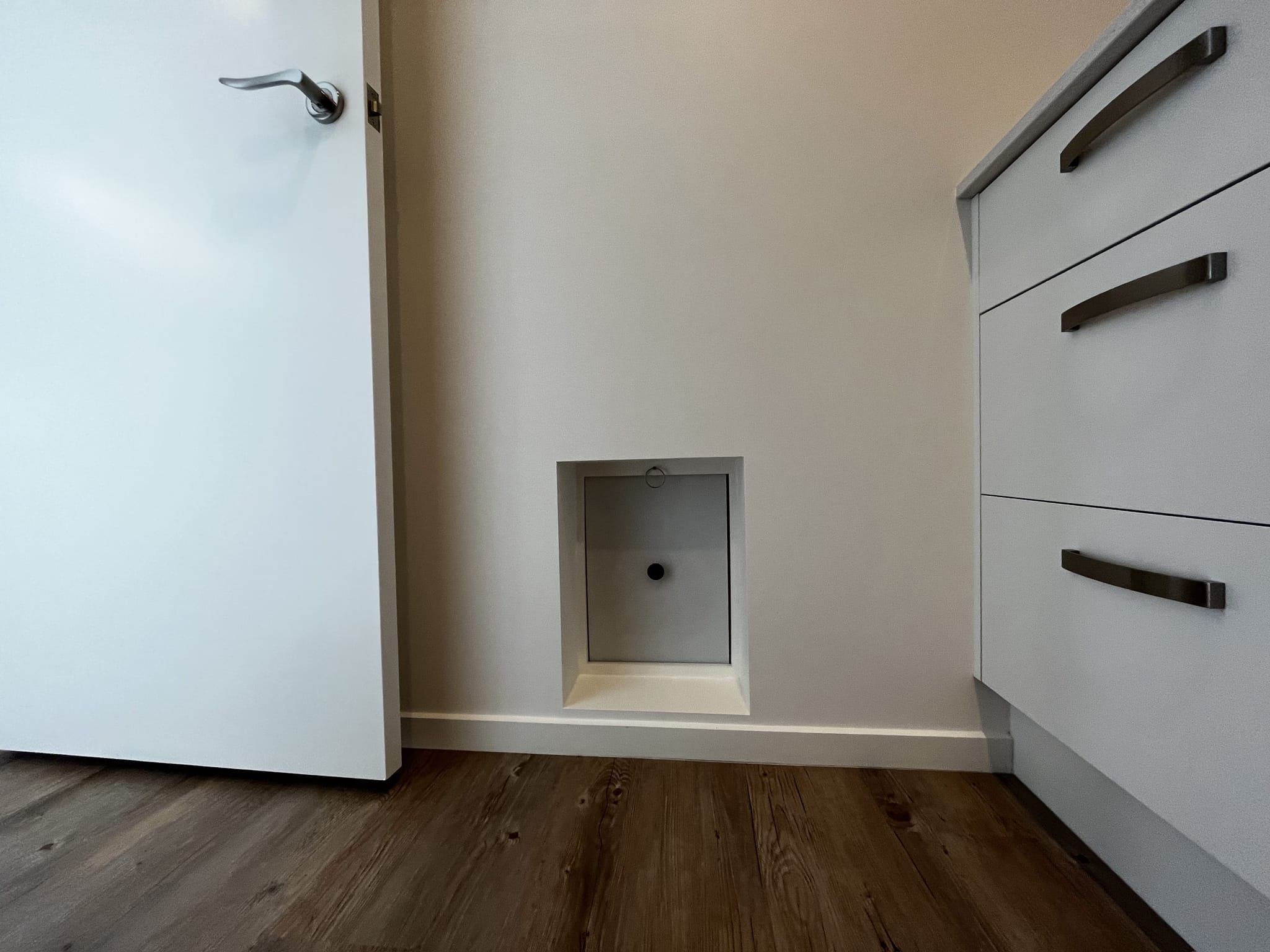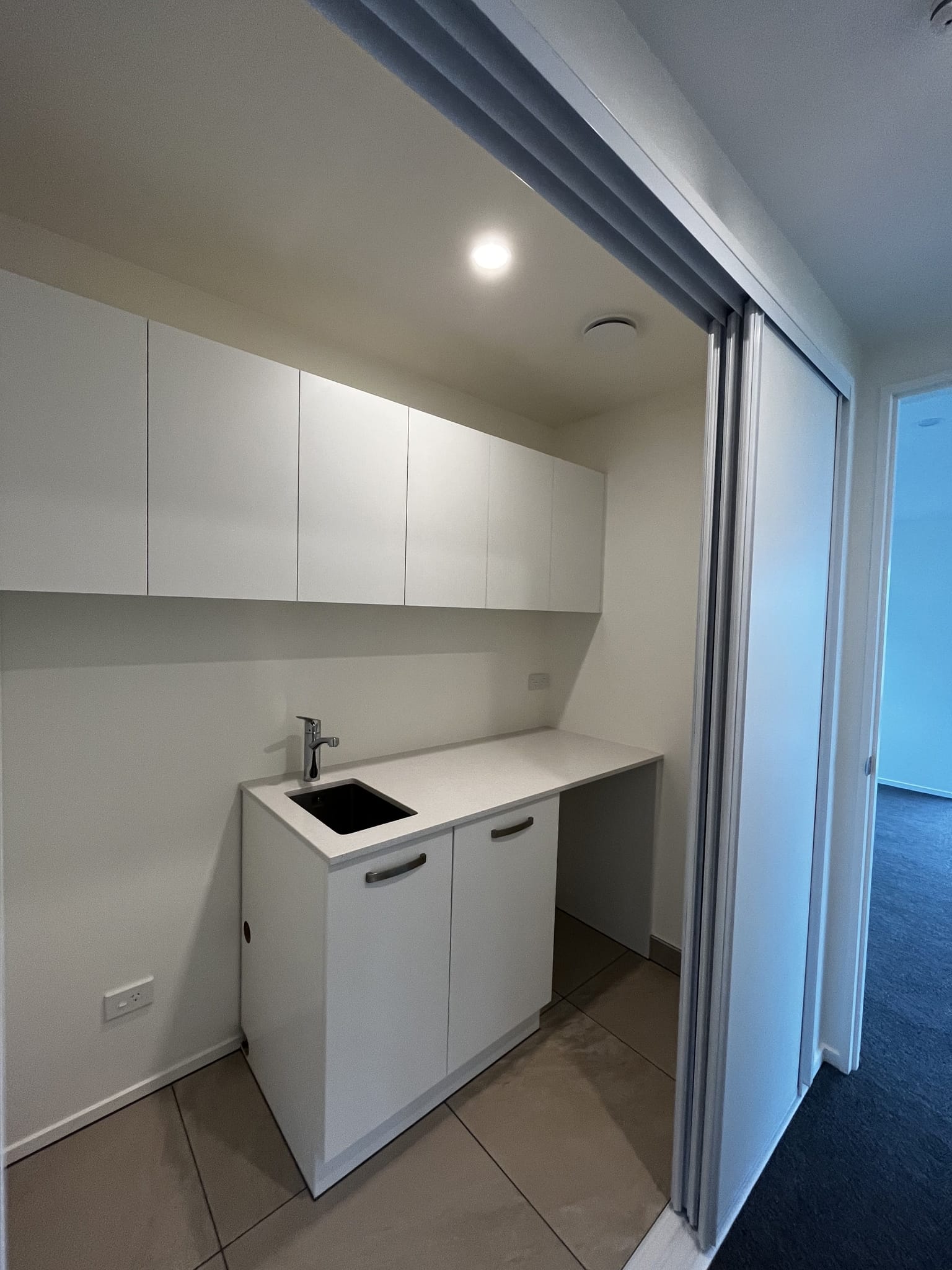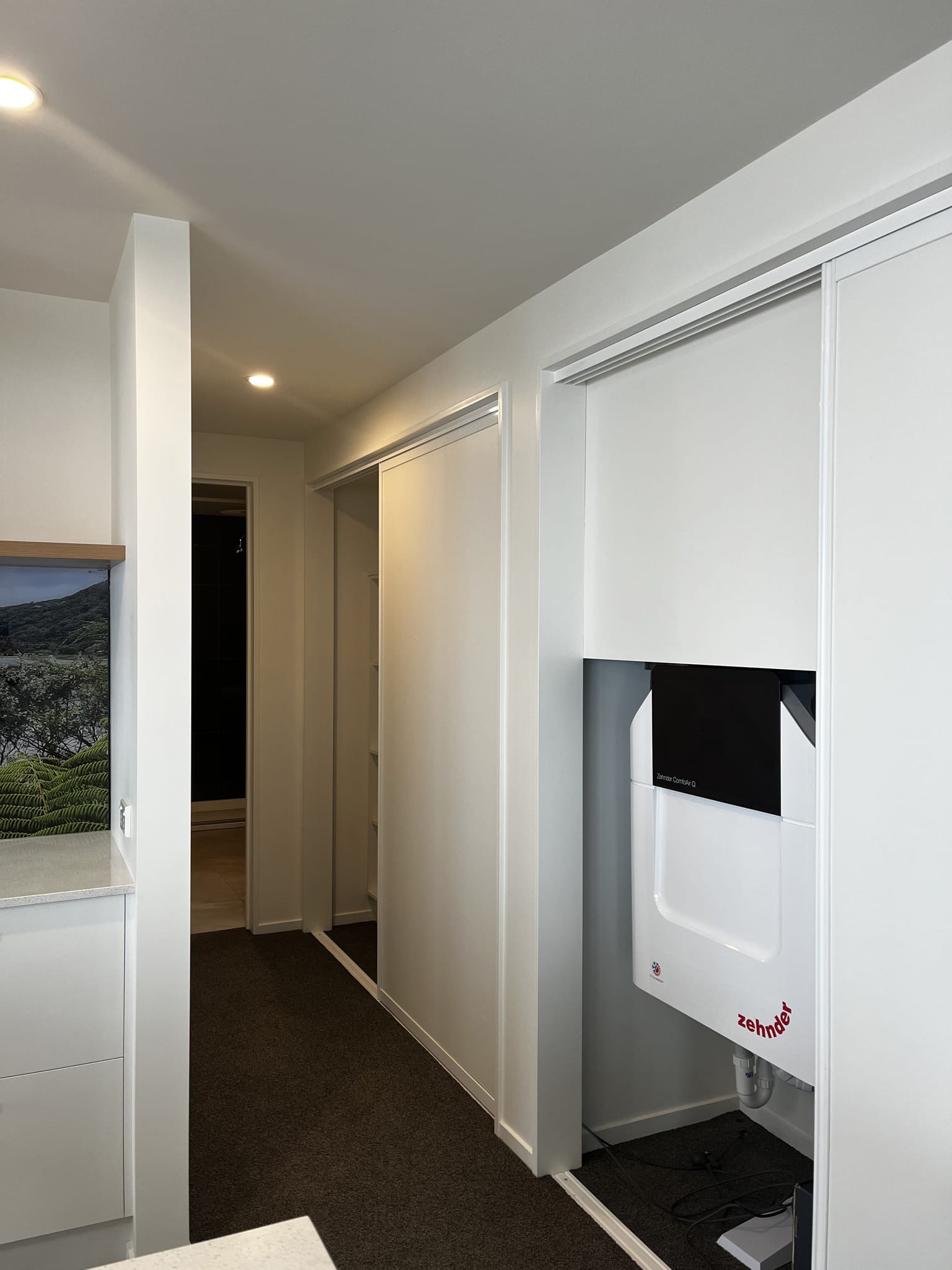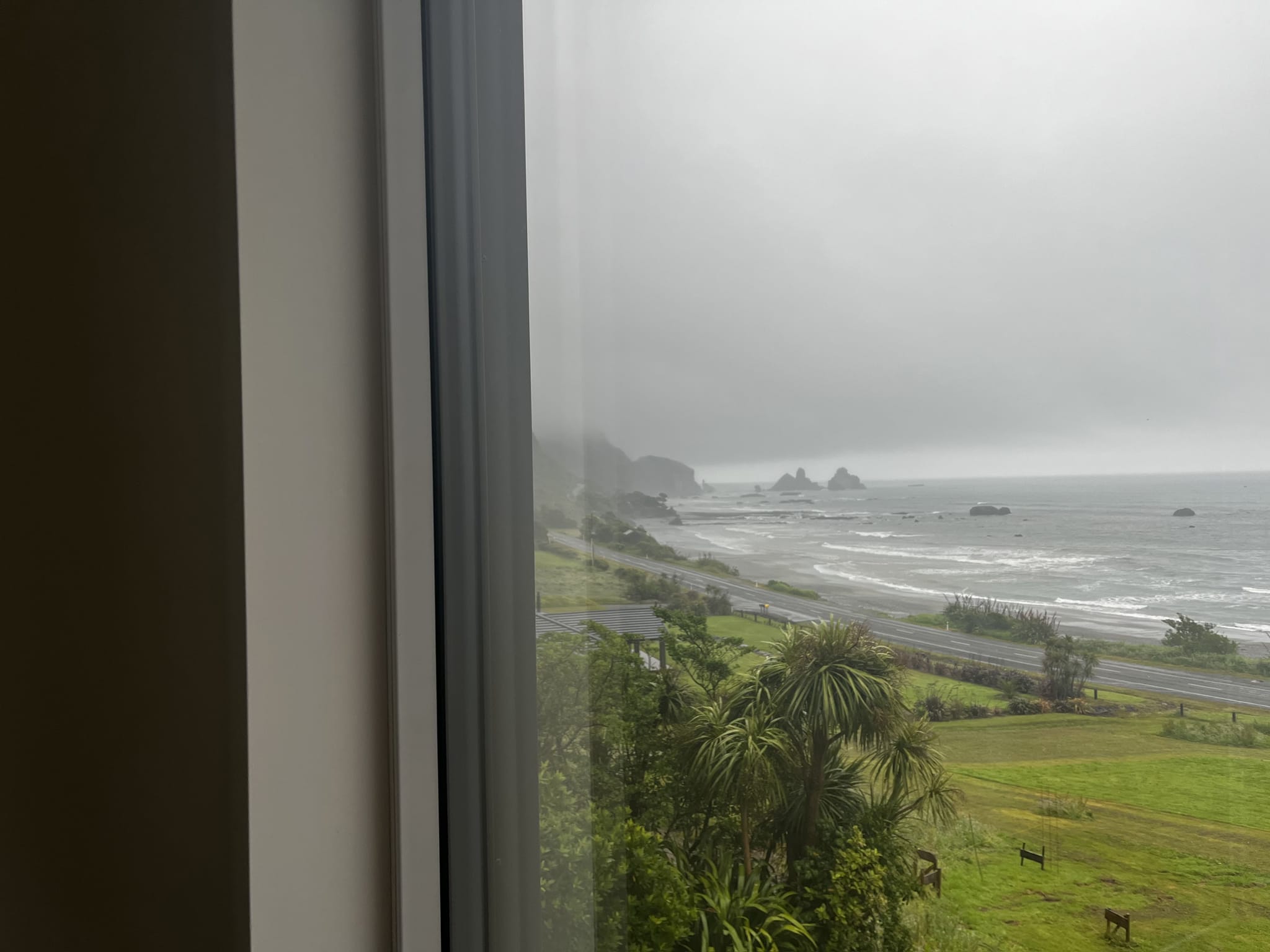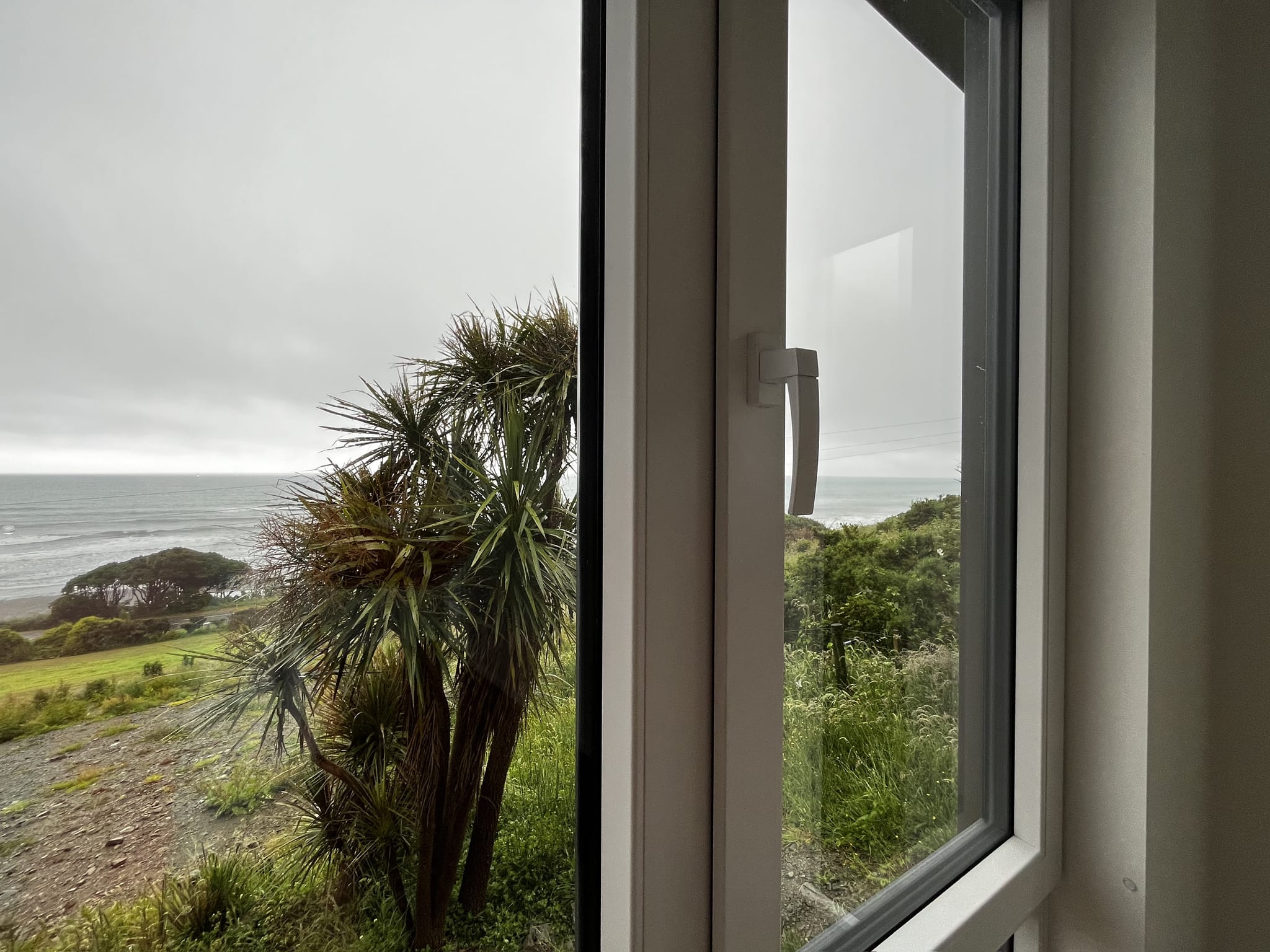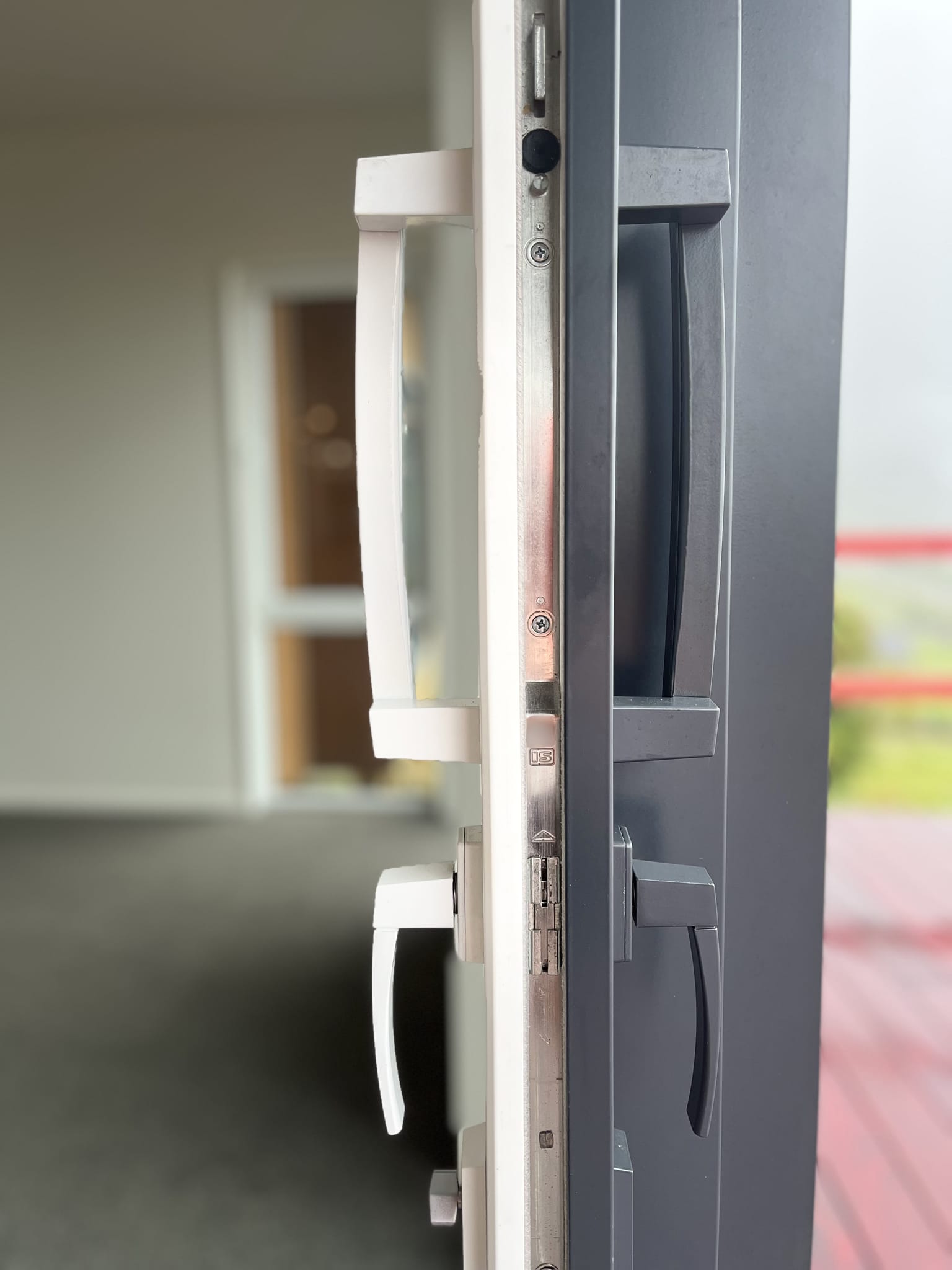‘The house is calm, quiet, warm and especially dry – coming from a very damp last two homes that did have a negative impact on our health, we notice this a lot.
I don’t miss the musty, damp smell at all, and now hardly remember it. That’s one of the biggest pluses for me – the air feels healthy indoors.
Being able to have a house built that not just suits our space needs, but feels healthy, has been so special to us. We have zero intention of leaving it.
This house is very efficient in heat retention. We hardly have to use heating at all, and if we do, it’s only for a few minutes to take the edge off things in winter. Marius still laughs when he remembers Brent begging him not to install a fireplace!!
As for costing, we have a spa at this place, plus guests for about half of the year constantly, and we’re paying similar in power to what we did when it was just us in a non-spa older house, where we rarely had people staying.’
Shirley & Marius
This energy-efficient home is located overlooking the Tasman Sea on the rugged but beautiful west coast of the South Island, between Greymouth and Punakaiki.
Whilst temperatures are not as cold as on the east coast, the humidity and wet weather on the west coast is the stinger. An airtight SIPs home built to passive house principles is the ideal solution. The mechanical heat recovery ventilation system continually brings in fresh drier air warmed by the stale air being expelled.
The airtightness means that when the windows and doors are shut the machine can work effectively to control air quality, air temperature, and humidity within the home, and importantly control moisture and condensation. Windows and doors can be opened – but the MHRV will work quickly to bring the indoor air quality and temperatures back to healthy comfortable levels once they are closed again as all air movement is now effectively controlled.
Dampness, mould, and moisture damage to buildings and its contents are common in these wet, humid environments. The integrity and health of the building, and its occupants, are maintained through the design principles of a passive house and the quality of the building work required to achieve these high levels of airtightness.
Thanks to the MHRV system, air tightness, and insulation, more even temperatures throughout the home mean that even those rooms on the south or east side shaded by bush will still be comfortable and dry.
The airtightness is achieved through the SIPs panels which have also been sealed and taped appropriately around joins and the exterior joinery. This means no draughts or means for moisture, or anything else, to enter the home.
The windows are double-glazed uPVC with aluminium clip-ons to match the exterior cladding. The thermal breaks, window seals, non-metallic joinery, and the low E Argon all contribute to better insulation and air tightness. Windows are one of the biggest weaknesses of uncontrolled air movement and unwanted thermal loss or gain.
In the summer, the coastal road becomes very busy with holidaymakers and locals alike. Many stop to admire the coastline opposite the home. The air tightness, primarily, and insulation provide a quiet home where traffic noises are not an issue.
Unfortunately, the noise of the sea is also removed but the large outdoor decks provide ample opportunity for the homeowners to enjoy the sights, sounds, and smells of their surroundings. A covered mechanical louvre system is to be installed to alleviate the weather limiting their outdoor time and providing shading to limit overheating. A spa on the deck has also been purchased……..and what a place to unwind!
